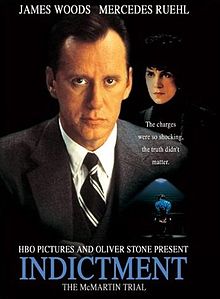Rascals case in brief
In the beginning, in 1989, more than 90 children at the Little Rascals Day Care Center in Edenton, North Carolina, accused a total of 20 adults with 429 instances of sexual abuse over a three-year period. It may have all begun with one parent’s complaint about punishment given her child.
Among the alleged perpetrators: the sheriff and mayor. But prosecutors would charge only Robin Byrum, Darlene Harris, Elizabeth “Betsy” Kelly, Robert “Bob” Kelly, Willard Scott Privott, Shelley Stone and Dawn Wilson – the Edenton 7.
Along with sodomy and beatings, allegations included a baby killed with a handgun, a child being hung upside down from a tree and being set on fire and countless other fantastic incidents involving spaceships, hot air balloons, pirate ships and trained sharks.
By the time prosecutors dropped the last charges in 1997, Little Rascals had become North Carolina’s longest and most costly criminal trial. Prosecutors kept defendants jailed in hopes at least one would turn against their supposed co-conspirators. Remarkably, none did. Another shameful record: Five defendants had to wait longer to face their accusers in court than anyone else in North Carolina history.
Between 1991 and 1997, Ofra Bikel produced three extraordinary episodes on the Little Rascals case for the PBS series “Frontline.” Although “Innocence Lost” did not deter prosecutors, it exposed their tactics and fostered nationwide skepticism and dismay.
With each passing year, the absurdity of the Little Rascals charges has become more obvious. But no admission of error has ever come from prosecutors, police, interviewers or parents. This site is devoted to the issues raised by this case.
On Facebook
Click for earlier Facebook posts archived on this site
Click to go to
Today’s random selection from the Little Rascals Day Care archives….
Click for earlier Facebook posts archived on this site
Click to go to
Today’s random selection from the Little Rascals Day Care archives….
Panics fade, ‘leaving in their wake bewilderment’
April 8, 2013
“The panic over satanic ritual abuse in the United States… subsided rather abruptly, as panics usually do, whether they are individual or social. They are like an acute anxiety attack – absolutely absorbing while in course and then suddenly gone, leaving in their wake bewilderment, fear of confronting the causes of the panic, and bafflement about what just happened….
“But traces of its presence can be found without much difficulty in the child abuse and neglect (CAN) literature. The panic, and the way CAN personnel had contributed to it, made the field more self-reflective and self-questioning. CAN practitioners had been shocked by the spectacle of their colleagues battling one another in courtrooms… unable to distinguish between real events of abuse and mass hysteria over alleged satanic abuse.”
– From “Childism: Confronting Prejudice Against Children” by Elisabeth Young-Bruehl (2012)
“More self-reflecting and self-questioning” may describe the current generation of child abuse professionals, but those who did such unspeakable damage in the 1980s and ’90s remain wedded to their junk science.
Santa, I know this is an unusual request, but….
 Dec. 14, 2012
Dec. 14, 2012
“Lamb, Nancy and Bill Hart. ‘Pointers on multi-victim, multi-perpetrator cases.’ American Prosecutors Research Institute 1992. Attorneys who prosecuted Little Rascals case offer advice regarding mass molestation cases.”
– Description of an 18-page how-to booklet that surely should be filed under “fantasy” or “horror” – if copies existed at all.
Unfortunately, all seem to have vanished from libraries as well as from booksellers. When I requested a copy from the National District Attorneys Association, parent of the research institute, I was told, “We only serve prosecutors, not (even) other lawyers. But… we haven’t been able to find it. So at this point, we could not even provide it to a prosecutor.”
Who do that voodoo? Why, prosecution’s ‘experts’
Nov. 14, 2012
“Prosecutors building these high-profile cases well understood the problems posed by the strange charges and the fantasy-riddled narratives of the child plaintiffs. How could they make credible to jurors the extraordinary prowess of defendants who could assault whole classes of preschoolers daily, dressing and undressing 20 or more, all accomplished in a half hour’s time, in a busy school, with no one noticing, no child ever sent home with mismatched socks?…
“Jurors had to be given a reason that 4-year-olds could be raped with butcher knives that left them uninjured, could be tied naked to trees and raped in broad daylight….
“The state’s solution lay with their experts – witnesses who could explain and render such mysteries comprehensible.”
– From “No Crueler Tyrannies: Accusation, False Witness and other Terrors of Our Times” by Dorothy Rabinowitz (2003)
Ah, those invaluable mystery-solving experts – such as Eileen Treacy of the Kelly Michaels trial, Kee MacFarlane of McMartin and of course Mark “Where there’s smoke….” Everson of Little Rascals.
What would prosecutors have done without them? (Probably, a helluva lot less harm.)
Not everyone was moved by HBO’s McMartin drama
 March 31, 2015
March 31, 2015
“…The watershed event marking the shift in public opinion on these (“satanic ritual abuse” day care) cases was the HBO airing of ‘Indictment: The McMartin Trial’ (watchable here on YouTube) in May 1995, wherein Ray Buckey, the child-molesting villain of the McMartin trial, was recast as the victim of a hysterical conspiracy theory.
“Five years earlier, no major television network would have dared question the infallibility of the testimony of ravished, innocent babes. A network like HBO is closely attuned to shifts in the public mood.
“Such TV dramas and feature films are generally more likely to respond to existing trends in public opinion on controversial issues than to break new ground, and so this docudrama marked a sort of closure on the issue in the public imagination, though the judicial system cannot shift direction so quickly.”
– From “The Metanarrative of Suspicion in Late Twentieth-Century America” by Sandra Baringer (2004)
Eighteen days before HBO broadcast “Indictment,” the North Carolina Court of Appeals had overturned the convictions of Bob Kelly and Dawn Wilson, but Kelly’s torture at the hands of the state was far from over: A year later he would be charged with raping a young girl outside the day care in 1987. Was prosecutor Nancy Lamb unable to “shift direction so quickly” – or simply unwilling?











0 CommentsComment on Facebook